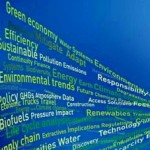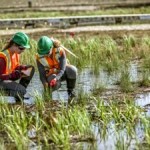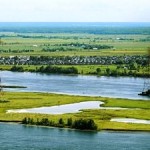Green Economy: Future, Fracture Points and Fairness
So while some may board the high speed train to future Green Growth, others may be left at the platform without a ticket. What are the prospects for small island states and for many smaller economies on continents such as Africa, Latin America and Asia?
Many of these still require pre-investment assistance and capacity building if they are to also enjoy economic growth, and more importantly sustainable Green Growth. Business, in partnership with the UN, governments and public finance houses has an important role to play in assisting the realization of a fairer and more equitable world.
It also has a vested interest in seeing markets for low carbon, high tech investments flourish everywhere and not just in a few nations. A vested interest too in seeing the sustainable and more intelligent management of increasingly scarce natural or nature-based resources – these will be constraints over the coming decades if not addressed.
Some Litmus Tests for Climate and Cancun
In respect to climate change, all eyes are now on the UN climate convention meeting in Cancun, Mexico. What are some of the elements that can assist in ensuring the meeting is a success? The $30 billion-worth of pledges need to be operationalized and operationalized fast. UNEP, working with nine leading modeling centres, estimates there remains a gap between the pledges and intentions linked to the Copenhagen Accord and the science.
Emissions in 2020 need to be somewhere just over 40 billion tones (Gt) of CO2 equivalent if we are to realize emission reductions by 2050 that keep a temperature rise to 2 degrees C or less. So, this gap needs to be bridged between now and Cancun or in Cancun itself. Options include some countries increasing their pledges upwards to bringing sectors such as maritime and shipping and aviation into the carbon and emission trading markets.
Is Business Out in Front?
Business, either through persuasion at the political level or through actions on the ground-for example greening their operations and their supply chains-can contribute to such aims and the wider sustainability challenge. Indeed in some ways, business is out in front.
It was suggested that a failure to secure an international regime in Copenhagen would be the death knell for the carbon markets. But the latest assessment of the European emissions trading market shows that despite this and in spite of a fall in emissions linked with the recession, the markets have proved remarkably resilient.
This should strengthen the resolve of others contemplating such markets with the ultimate aim of securing a higher carbon price. Indeed a recent assessment of the proposed Kerry-Graham-Lieberman Senate bill in the United States, says if it were enacted in full the emissions trading market there could be worth over $250 billion. The price of carbon could be over $30 a tonne between 2013 and 2020.
Green Growth-its Not Just Climate Change
The role of business and the link between more creative and intelligent markets and the wider sustainability agenda, is not confined to climate change. Towards the end of 2010-the UN’s International Year of Biodiversity – a landmark report by The Economics of Ecosystems and Biodiversity, hosted by UNEP, will be published.
Already some of the figures are emerging: An investment of $45 billion could secure a global network of protected areas whose services are worth close to $5 trillion annually. A return of 100:1. Some companies, including some in this room today, are making the business case for investing in natural resources whether they be in productive soils or Biodiversity.
Climate and Natural Resource Scarcity – the Defining Challenge
Business and its experience will be key as to whether governments are persuaded to support new kinds of markets-for example in water and nature-based services-that bring value to these natural assets in order to conserve and sustainably manage them.
REDD may be the first, but eventually markets or funds could transform the economics of other terrestrial ecosystems via greater incentives for, for example, sustainable agriculture.
And what about marine: there is an urgent need to capture the true value of coastal ecosystems in terms of their role as nurseries for fish and coastal defense but also for also carbon storage.
The Green Economy is emerging, in part driven by the financial and economic crisis.
And in part because of a growing realization that the blunt and limited markets of the past are unlikely to sustain six billion people, rising to nine billion by 2050.
From its day-to day operations, to its ecological footprint and across its supply chains, managing environmental risks like climate change and the scarcity of natural resources, will increasingly define a company’s business and political life in the 21st century.
Sustainable development is not a choice, but an imperative and the only course possible in our 21st century world.
A Green Economy will happen, either by design or default. I am sure that any prudent and forward-looking business man or woman, would back a well-thought out, design-led path rather than the alternate one.
By its very nature, pressing the default button rather than the design route will be disruptive, unpredictable and bad for business.”
– Achim Steiner
UNEP Executive Director
Business for the Environment (B4E) Summit
Seoul, 21st April, 2010
About B4E:
The B4E Summit, took place in Seoul (Republic of Korea) from 21-23 April, and was hosted by UNEP, the UN Global Compact and the World Wildlife Fund. It brings together leaders from business, government, NGOs and international agencies to engage in multi-stakeholder conversations around solutions in areas such as biodiversity, climate change, resource & energy efficiency, renewables, and new green business models.
With hundreds of participants from more than 35 countries, B4E is the leading international conference for dialogue and business-driven action for the environment.














